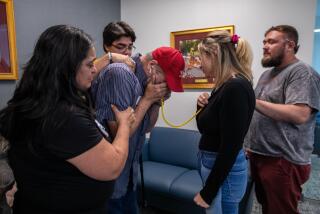No Transplant Data Improvement
As the federal government prepares to take action against underperforming transplant centers, new data released this month show no improvement in the number of programs that fail to meet Medicare survival standards.
Eleven of the 234 federally funded liver, heart and lung programs had one-year survival rates that fell below the benchmarks established by the U.S. Centers for Medicare and Medicaid Services, according to the latest data from the Scientific Registry of Transplant Recipients. The data cover different 2 1/2 -year periods from 2002 to 2005, depending on the organ.
The same number of centers had subpar survival rates in the registry’s January report, but some programs have been added and others dropped since then.
The Medicare agency, which funds most of the nation’s transplant centers, requires programs to achieve a specific survival rate to be certified initially for funding. Medicare also requires transplant programs to perform a minimum number of operations to ensure competency. The benchmarks vary by organ, and there are none for kidney transplants.
Last month, The Times reported that nearly 50, or about one in five, federally funded transplant centers did not meet at least one of those standards.
After questions from The Times earlier this year, the Medicare agency sent letters to every certified transplant center requesting information on performance, staffing and changes that could affect patients. Officials have completed their review of the responses and are finalizing a list of underperforming centers, said Dr. Barry Straube, Medicare’s chief medical officer, in a statement.
The agency “will then take appropriate action to ensure compliance” with Medicare standards, he said, up to and including pulling federal funding. The agency expects to publicly announce its plans in the next few weeks.
The Times reported earlier this month that, based on the new data, the liver transplant program at USC University Hospital had logged one of the highest death rates in the country. Less than 76% of patients who received new livers at USC from January 2003 to June 2005 survived at least a year, according to the Scientific Registry of Transplant Recipients. The federal benchmark is 77%.
Among other centers that fell short of Medicare’s standards were the lung and liver transplant programs at Johns Hopkins Hospital in Baltimore.
Ten of the 29 patients who got a lung transplant at Hopkins from July 2002 to December 2004 died within a year of their surgery. That survival rate, 65.5%, is below the threshold of 69% set by Medicare to qualify for federal funding in the first place.
In a statement Friday, Johns Hopkins officials said the latest data “do not reflect the current status” of the lung and liver programs.
“In recent years, the Hopkins transplant program has undergone many significant changes, including the appointment of a new director of the Comprehensive Transplant Center and the recruitment of several outstanding surgeons and physicians,” the hospital said. “This team has demonstrated its ability and commitment to be national leaders in both innovation and quality of care.”
U.S. Sen. Charles Grassley (R-Iowa), who has been leading an inquiry into the nation’s transplant system, said he is concerned about government oversight of subpar centers. “I’m not surprised that we’re learning of more transplant facilities that fail to meet Medicare standards,” said Grassley, chairman of the Senate Finance Committee, in a statement.
Since The Times report last month, the Medicare agency has removed two transplant programs from its certified list because they had shut down.
Some programs were able to boost their survival rates back up above Medicare standards. At Hartford Hospital in Connecticut, just 64.7% of the heart transplant patients survived at least a year after surgery in the previous reporting period.
The new statistics show that Hartford’s survival rate improved to 81.3%, higher than the federal threshold of 73%. But the hospital performed just five transplants last year, short of the federal volume standard of 12.
Dr. Jonathan A. Hammond, surgical director of Hartford’s heart transplant program, said he was happy with his program’s improvement. Small centers, he said, have a difficult time rebounding after a brief period of problems that result in more deaths than expected.
A list of underperforming transplant centers is available at latimes.com/transplant.






